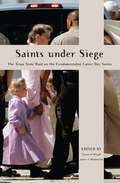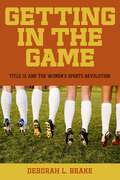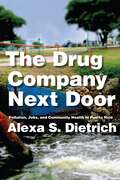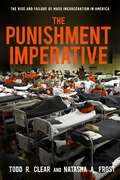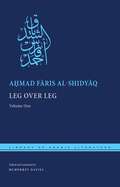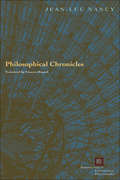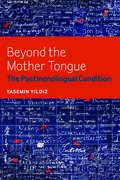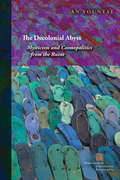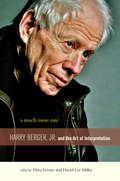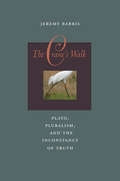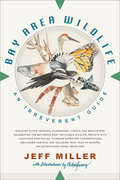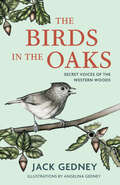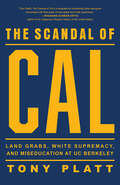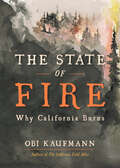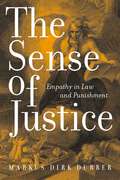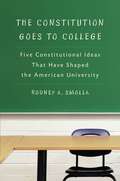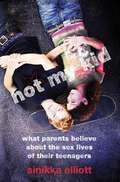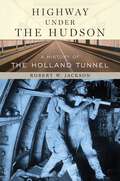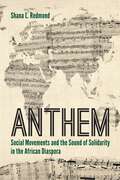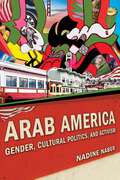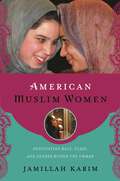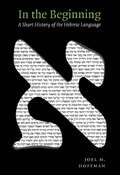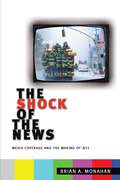- Table View
- List View
Saints Under Siege: The Texas State Raid on the Fundamentalist Latter Day Saints (New and Alternative Religions #2)
by Stuart A. WrightIn April 2008, state police and child protection authorities raided Yearning for Zion Ranch near Eldorado, Texas, a community of 800 members of the Fundamentalist Church of Jesus Christ Latter Day Saints (FLDS), a polygamist branch of the Mormons. State officials claimed that the raid, which was triggered by anonymous phone calls from an underage girl to a domestic violence hotline, was based on evidence of widespread child sexual abuse. In a high-risk paramilitary operation, 439 children were removed from the custody of their parents and held until the Third Court of Appeals found that the state had overreached. Not only did the state fail to corroborate the authenticity of the hoax calls, but evidence reveals that Texas officials had targeted the FLDS from the outset, planning and preparing for a confrontation.Saints under Siege provides a thorough, theoretically grounded critical examination of the Texas state raid on the FLDS while situating this event in a broader sociological context. The volume considers the raid as an exemplar case of a larger pattern of state actions against minority religions, offering comparative analyses to other government raids both historically and across cultures. In its look beyond the Texas raid, it provides compelling evidence of social intolerance and state repression of unpopular minority faiths in general, and the FLDS in particular.
Getting in the Game: Title IX and the Women's Sports Revolution (Critical America #51)
by Deborah L. BrakeIn this first legal analysis of Title IX, Deborah L. Brake assesses the statute’s successes and failures, using a feminist theory lens to understand, defend, and critique the law. While the statute has created tremendous gains for female athletes, not only raising the visibility and cultural acceptance of women in sports, but also creating social bonds forwomen, positive body images, and leadership roles, the disparities in funding between men’s and women’s sports haveremained remarkably resilient. At the same time, female athletescontinue to receive less prestige and support than their male counterparts, which in turn filters into the arena of professional sports. Brake provides a richer understanding and appreciation of what Title IX has accomplished, while taking a critical look at the places where the law has fallen short.A unique contribution to the literature on Title IX, Getting in the Game fully explores the theory, policy choices, and successes and limitations of this historic law.
The Drug Company Next Door: Pollution, Jobs, and Community Health in Puerto Rico
by Alexa S. Dietrich"This fascinating and most timely criticalmedical anthropology study successfully binds two still emergent areas ofcontemporary anthropological research in the global world: the nature andsignificant impact of multinational pharmaceutical manufacturers on humansocial life everywhere, and the contribution of corporations to the fast-paceddegradation of our life support system, planet Earth. . . . Focusing on apharmaceutically-impacted town on the colonized island of Puerto Rico, Dietrichably demonstrates the value of ethnography carried out in small places inframing the large issues facing humanity."—Merrill Singer, University of ConnecticutThe production of pharmaceuticals is among themost profitable industries on the planet. Drug companies produce chemicalsubstances that can save, extend, or substantially improve the quality of humanlife.However, even as the companiespresent themselves publicly as health and environmental stewards, theirfactories are a significant source of air and water pollution--toxic to peopleand the environment. In Puerto Rico, the pharmaceutical industry is thebackbone of the island’s economy: in one small town alone, there are over adozen drug factories representing five multinationals, the highestconcentration per capita of such factories in the world. It is a place wherethe enforcement of environmental regulations and the public trust they ensureare often violated in the name of economic development.The Drug Company Next Door unites the concerns ofcritical medical anthropology with those of political ecology, investigatingthe multi-faceted role of pharmaceutical corporations as polluters, economicproviders, and social actors. Ratherthan simply demonizing the drug companies, the volume explores the dynamicsinvolved in their interactions with the local community and discusses thestrategies used by both individuals and community groups to deal with the consequencesof pollution.The Drug Company Next Door puts a human face on agrowing set of problems for communities around the world. Accessible and engaging, the book encouragesreaders to think critically about the role of corporations in everyday life,health, and culture.
The Punishment Imperative: The Rise and Failure of Mass Incarceration in America
by Todd R. Clear Natasha A. FrostClear and Frost chart the rise of penal severity in the U.S. and the forces necessary to end itOver the last 40 years, the US penal system has grown at an unprecedented rate—five times larger than in the past and grossly out of scale with the rest of the world. In The Punishment Imperative, eminent criminologists Todd R. Clear and Natasha A. Frost argue that America’s move to mass incarceration from the 1960s to the early 2000s was more than just a response to crime or a collection of policies adopted in isolation; it was a grand social experiment. Tracing a wide array of trends related to the criminal justice system, this book charts the rise of penal severity in America and speculates that a variety of forces—fiscal, political, and evidentiary—have finally come together to bring this great social experiment to an end. The authors stress that while the doubling of the crime rate in the late 1960s represented one of the most pressing social problems at the time, it was instead the way crime posed a political problem—and thereby offered a political opportunity—that became the basis for the great rise in punishment. Clear and Frost contend that the public’s growing realization that the severe policies themselves, not growing crime rates, were the main cause of increased incarceration eventually led to a surge of interest in taking a more rehabilitative, pragmatic, and cooperative approach to dealing with criminal offenders that still continues to this day. Part historical study, part forward-looking policy analysis, The Punishment Imperative is a compelling study of a generation of crime and punishment in America.
Leg over Leg: Volume One (Library of Arabic Literature #6)
by Aḥmad Fāris al-ShidyāqFinalist for the 2016 National Translation Award given by the American Literary Translators' AssociationThe life, birth, and early years of 'the Fariyaq'—the alter ego of the Arab intellectual Ahmad Faris al-ShidyaqLeg over Leg recounts the life, from birth to middle age, of ‘the Fariyaq,’ alter ego of Ahmad Faris al-Shidyaq, a pivotal figure in the intellectual and literary history of the modern Arab world. The always edifying and often hilarious adventures of the Fariyaq, as he moves from his native Lebanon to Egypt, Malta, Tunis, England and France, provide the author with grist for wide-ranging discussions of the intellectual and social issues of his time, including the ignorance and corruption of the Lebanese religious and secular establishments, freedom of conscience, women’s rights, sexual relationships between men and women, the manners and customs of Europeans and Middle Easterners, and the differences between contemporary European and Arabic literatures. Al-Shidyaq also celebrates the genius and beauty of the classical Arabic language.Akin to Sterne and Rabelais in his satirical outlook and technical inventiveness, al-Shidyaq produced in Leg Over Leg a work that is unique and unclassifiable. It was initially widely condemned for its attacks on authority, its religious skepticism, and its “obscenity,” and later editions were often abridged. This is the first English translation of the work and reproduces the original Arabic text, published under the author’s supervision in 1855.
Philosophical Chronicles (Perspectives in Continental Philosophy)
by Jean-Luc NancyIn eleven brief, engaging talks originally broadcast on French public radio, Jean-Luc Nancy offers a philosopher’s rough and ready account of some of the pressing questions of our day and addresses chronic issues within philosophical inquiry. The fundamental question, which recurs again and again, is whether philosophy is conditioned by the world the philosopher inhabits, or whether it must remain unconditioned by that world.Nancy discusses: terror in relation to religion and capitalism; the relevance of philosophy to life (whether philosophy can be a form of life); the status of god in monotheism; the relevance of “politics” as it is defined today; the “Heidegger affair” and its consequences for philosophy; war, especially in the context of the invasion of Iraq; the role of negativity in philosophical and cultural discourses; “art” and the variability of its meanings; the predominance of the metaphor of the sun. The essays can be read separately, but together they amount to the striking vision of a philosopher sensitive to the world of his times and attempting to open his own path within it.
Circuitous Journeys: Modern Spiritual Autobiography (Studies in Religion and Literature)
by David J. LeighCircuitous Journeys: Modern Spiritual Autobiography provides a close reading and analysis of ten major life stories by twentieth-century leaders and thinkers from a variety of religious and cultural traditions: Mohandas Gandhi, Black Elk, Thomas Merton, Dorothy Day, C. S. Lewis, Malcolm X, Paul Cowan, Rigoberta Menchu, Dan Wakefield, and Nelson Mandela. The book uses approaches from literary criticism, developmental psychology (influenced by Erik Erikson, James Fowler, and Carol Gilligan), and spirituality (influenced by John S. Donne, Emile Griffin, Walter Conn, and Bernard Lonergan). Each text is read in the light of the autobiographical tradition begun by St. Augustine’s Confessions, but with a focus on distinctively modern and post-modern transformations of the self-writing genre. The twentieth-century context of religious alienation, social autonomy, identity crises and politics, and the search for social justice is examined in each text.
Beyond the Mother Tongue: The Postmonolingual Condition
by Yasemin YildizBeyond the Mother Tongue examines distinct forms of multilingualism, such as writing in one socially unsanctioned “mother tongue” about another language (Franz Kafka); mobilizing words of foreign derivation as part of a multilingual constellation within one language (Theodor W. Adorno); producing an oeuvre in two separate languages simultaneously (Yoko Tawada); and mixing different languages, codes, and registers within one text (Feridun Zaimoglu).
The Sons of Molly Maguire: The Irish Roots of America's First Labor War
by Mark BulikSensational tales of true-life crime, the devastation of the Irish potato famine, the upheaval of the Civil War, and the turbulent emergence of the American labor movement are connected in a captivating exploration of the roots of the Molly Maguires. A secret society of peasant assassins in Ireland that re-emerged in Pennsylvania’s hard-coal region, the Mollies organized strikes, murdered mine bosses, and fought the Civil War draft. Their shadowy twelve-year duel with all powerful coal companies marked the beginning of class warfare in America. But little has been written about the origins of this struggle and the folk culture that informed everything about the Mollies.A rare book about the birth of the secret society, The Sons of Molly Maguire delves into the lost world of peasant Ireland to uncover the astonishing links between the folk justice of the Mollies and the folk drama of the Mummers, who performed a holiday play that always ended in a mock killing. The link not only explains much about Ireland’s Molly Maguires—where the name came from, why the killers wore women’s clothing, why they struck around holidays—but also sheds new light on the Mollies’ re-emergence in Pennsylvania.The book follows the Irish to the anthracite region, which was transformed into another Ulster by ethnic, religious, political, and economic conflicts. It charts the rise there of an Irish secret society and a particularly political form of Mummery just before the Civil War, shows why Molly violence was resurrected amid wartime strikes and conscription, and explores how the cradle of the American Mollies became a bastion of later labor activism. Combining sweeping history with an intensely local focus, The Sons of Molly Maguire is the captivating story of when, where, how, and why the first of America’s labor wars began.
The Decolonial Abyss: Mysticism and Cosmopolitics from the Ruins (Perspectives in Continental Philosophy)
by An YountaeThe Decolonial Abyss probes the ethico-political possibility harbored in Western philosophical and theological thought for addressing the collective experience of suffering, socio-political trauma, and colonial violence. In order to do so, it builds a constructive and coherent thematization of the somewhat obscurely defined and underexplored mystical figure of the abyss as it occurs in Neoplatonic mysticism, German Idealism, and Afro-Caribbean philosophy.The central question An Yountae raises is, How do we mediate the mystical abyss of theology/philosophy and the abyss of socio-political trauma engulfing the colonial subject? What would theopoetics look like in the context where poetics is the means of resistance and survival? This book seeks to answer these questions by examining the abyss as the dialectical process in which the self’s dispossession before the encounter with its own finitude is followed by the rediscovery or reconstruction of the self.
A Touch More Rare: Harry Berger, Jr., and the Arts of Interpretation
by Harry BergerHarry Berger, Jr., has long been one of our most revered and respected literary and cultural critics. Since the late nineties, a stream of remarkable and innovative publications have shown how very broad his interests are, moving from Shakespeare to baroque painting, to Plato, to theories of early culture.In this volume a distinguished group of scholars gathers to celebrate the work of Harry Berger, Jr. To "celebrate," in Berger's words, is "to visit something either in great numbers or else frequently-to go away and come back, go away and come back, go away and come back. Celebrating is what you do the second or third time around, but not the first. To celebrate is to revisit. To revisit is to revise. Celebration is the eureka of revision." Not only former students but distinguished colleagues and scholars come together in these pages to discover Berger's eurekas-to revisit the rigor and originality of his criticism, and occasionally to revise its conclusions, all through the joy of strenuous engagement. Nineteen essays on Berger's Shakespeare, his Spenser, his Plato, and his Rembrandt, on his theories of interpretation and cultural change and on the ethos of his critical and pedagogical styles, open new approaches to the astonishing ongoing body of work authored by Berger. An introduction by the editors and an afterword by Berger himself place this festival of interpretation in the context of Berger's intellectual development and the reception of his work from the mid-twentieth century into the first decade of the twenty-first.
The Crane's Walk: Plato, Pluralism, and the Inconstancy of Truth
by Jeremy BarrisIn The Crane's Walk, Jeremy Barris seeks to show that we can conceive and live with a pluralism of standpoints with conflicting standards for truth--with the truth of each being entirely unaffected by the truth of the others. He argues that Plato's work expresses this kind of pluralism, and that this pluralism is important in its own right, whether or not we agree about what Plato's standpoint is.The longest tradition of Plato scholarship identifies crucial faults in Plato's theory of Ideas. Barris argues that Plato deliberately displayed those faults, because he wanted to demonstrate that basic kinds of error or illogic have dimensions that are crucial to the establishing of truth. These dimensions legitimate a paradoxical coordination of logically incompatible conceptions of truth. Connecting this idea with emerging currents of Plato scholarship, he emphasizes, in addition to the dialogues' arguments, the importance of their nonargumentative features, including drama, myths, fictions, anecdotes, and humor. These unanalyzed nonargumentative features function rigorously, as a lever with which to examine the enterprise of rational argument itself, without presupposing its standards or illegitimately assimilating any position to the standards of another.Today, communities are torn apart by conflicts within and between a host of different pluralist and absolutist commitments. The possibility developed in this book-a coordination of absolute and relative truth that allows an understanding of some relativist and some absolutist positions as being fully legitimate and as capable of existing in a relation to their opposites-may contribute to perspectives for resolving these conflicts.
Bay Area Wildlife: An Irreverent Guide
by Jeff MillerLearn about the wildlife of the Bay Area from a lifelong protector of endangered species, and enjoy the wild ride.Jeff Miller's quirky guide to the coolest animal neighbors in the Bay Area will have you gawking at elk, whooping with cranes, and crowning yourself a crossing guard for newts before you know it. Join Jeff on a local safari to meet more than sixty species of mammals, birds, fish, reptiles, amphibians, and insects, and discover the fascinating and sometimes bizarre mating, feeding, and athletic antics of our most charismatic animals.Portraits by Obi Kaufmann, the renowned conservationist artist who created The California Field Atlas, bring each animal to vivid life alongside fun facts, comical photos, and maps to help you scope out the best spots to find your furred, feathered, slimy, and slithery friends. Imbued with the author’s deep compassion for the well-being of our local fauna, Bay Area Wildlife reveals why each of these creatures matters, as well as the threats that loom over our region's incredible biodiversity.
The Birds in the Oaks: Secret Voices of the Western Woods
by Jack GedneyThe first book on the birds of California's oaks, from our most lyrical and observant wanderer of the woods.With charm and delight, The Birds in the Oaks introduces us to the birds who burrow, forage, and soar among California's keystone trees. The mighty oak hosts a multitude of avian denizens—from canopy hoppers to ground nesters to short-billed surface pluckers—who rely on the trees' well-stocked pantry of acorns, insects, and flowers for sustenance and shelter. Spunky kinglets, crimson-eyed towhees, cuddle-craving bushtits, intrepid nuthatches, and impudent wrens are among the many memorable cast members in this pageant of oak-allied birds.Jack Gedney lyrically conveys the beautiful, comic, and endearing qualities of over fifteen bird species, each profile paired with an illustration by Angelina Gedney. His bird-filled tales of adaptation, ingenuity, and sheer persistence also bring to light the warp and weft of cross-species interdependence. The Birds in the Oaks reveals to us the utter joy of birds, the superabundant world of the oaks, and the innumerable interconnections these living beings create.
The Scandal of Cal: Land Grabs, White Supremacy, and Miseducation at UC Berkeley
by Tony PlattThe incendiary story of conquest, racism, warfare, and historical amnesia at one of the world’s most celebrated and ostensibly enlightened public universities."This is a land acknowledgment." —Ruth Wilson Gilmore, author of Abolition Geography: Essays towards Liberation"The Scandal of Cal is a template for scrutinizing other land-grant universities … This is a beautifully written and heartbreaking narrative." —Roxanne Dunbar-Ortiz, author of An Indigenous Peoples’ History of the United StatesThe University of California, Berkeley—widely known as "Cal"—is admired worldwide as a bastion of innovation and a hub for progressive thought. Far less known are the university’s roots in plunder, warfare, and the promotion of white supremacy. As Tony Platt shows in The Scandal of Cal, these original sins sit at the center of UC Berkeley’s history. Platt looks unflinchingly at the university’s desecration of graves and large-scale hoarding of Indigenous remains. He tracks its role in developing the racist pseudoscience of eugenics in the early twentieth century. He sheds light on the school’s complicity with the military-industrial complex and its incubation of unprecedented violence through the Manhattan Project. And he underscores its deliberate and continued evasions about its own wrongdoings, which echo in the institution’s decision-making up to the present day. This book, above all, illuminates Cal’s culpability in some of the cruelest chapters of US history and sounds a clarion call for the university to undertake a thorough and earnest reckoning with its past. It is required reading for Cal alumni, students, faculty, and staff, and for anyone concerned with the impact of higher education in the United States and beyond.
The State of Fire: Why California Burns
by Obi KaufmannHow do we live with fire? From the creator of The California Field Atlas, a book of stewardship, resilience, and hope.Fire is an essential part of California's ecology. Humans have been using it to shape the California landscape for thousands of years. But today many Californians' relationship to fire is one of fear. Obi Kaufmann, author of the best-selling California Field Atlas, now asks: How do we live with fire? What makes fire essential to a healthy and biodiverse Golden State, and how do we benefit from its teachings? With the same solution-minded ethic as his much-admired The State of Water: Understanding California's Most Precious Resource, Kaufmann presents fire as a force of regeneration rather than apocalypse. He considers the long history of ecological burns, the varied ways fire behaves across the state, and the lessons we can learn from California's largest fires of recent decades.Packed with Kaufmann's signature watercolor maps and paintings, The State of Fire confronts one of California's most pressing social and ecological challenges. From this maelstrom Kaufmann emerges to share a deepened love for the natural world—and a refreshingly hopeful vision of California's future.
The Sense of Justice: Empathy in Law and Punishment (Critical America #71)
by Markus Dirk DubberIn The Sense of Justice, distinguished legal author Markus Dirk Dubber undertakes a critical analysis of the “sense of justice”: an overused, yet curiously understudied, concept in modern legal and political discourse. Courts cite it, scholars measure it, presidential candidates prize it, eulogists praise it, criminals lack it, and commentators bemoan its loss in times of war. But what is it? Often, the sense of justice is dismissed as little more than an emotional impulse that is out of place in a criminal justice system based on abstract legal and political norms equally applied to all.Dubber argues against simple categorization of the sense of justice. Drawing on recent work in moral philosophy, political theory, and linguistics, Dubber defines the sense of justice in terms of empathy—the emotional capacity that makes law possible by giving us vicarious access to the experiences of others. From there, he explores the way it is invoked, considered, and used in the American criminal justice system. He argues that this sense is more than an irrational emotional impulse but a valuable legal tool that should be properly used and understood.
The Constitution Goes to College: Five Constitutional Ideas That Have Shaped the American University
by Rodney A. SmollaAmerican college campuses, where ideas are freely exchanged, contested, and above all uncensored, are historical hotbeds of political and social turmoil. In the past decade alone, the media has carefully tracked the controversy surrounding the speech of Iranian President Mahmoud Ahmadinejad at Columbia, the massacres at Virginia Tech, the dismissal of Harvard’s President Lawrence Summers, and the lacrosse team rape case at Duke, among others. No matter what the event, the conflicts that arise on our campuses can be viewed in terms of constitutional principles, which either control or influence outcomes of these events. In turn, constitutional principles are frequently shaped and forged by campus culture, creating a symbiotic relationship in which constitutional values influence the nature of universities, which themselves influence the nature of our constitutional values.In The Constitution Goes to College, Rodney A. Smolla—a former dean and current university president who is an expert on the First Amendment—deftly uses the American university as a lens through which to view the Constitution in action. Drawing on landmark cases and conflicts played out on college campuses, Smolla demonstrates how five key constitutional ideas—the living Constitution, the division between public and private spheres, the distinction between rights and privileges, ordered liberty, and equality—are not only fiercely contested on college campuses, but also dominate the shape and identity of American university life.Ultimately, Smolla compellingly demonstrates that the American college community, like the Constitution, is orderly and hierarchical yet intellectually free and open, a microcosm where these constitutional dichotomies play out with heightened intensity.
Not My Kid: What Parents Believe about the Sex Lives of Their Teenagers
by Sinikka ElliottTeenagers have sex. While almost all parents understand that many teenagers are sexually active, there is a paradox in many parents’ thinking: they insist their own teen children are not sexual, but characterize their children’s peers as sexually-driven and hypersexual. Rather than accuse parents of being in denial, Sinikka Elliott teases out the complex dynamics behind this thinking, demonstrating that it is rooted in fears and anxieties about being a good parent, the risks of teen sexual activity, and teenagers’ future economic and social status. Parents—like most Americans—equate teen sexuality with heartache, disease, pregnancy, promiscuity, and deviance and want their teen children to be protected from these things.Going beyond the hype and controversy, Elliott examines how a diverse group of American parents of teenagers understand teen sexuality, showing that, in contrast to the idea that parents are polarized in their beliefs, parents are confused, anxious, and ambivalent about teen sexual activity and how best to guide their own children’s sexuality. Framed with an eye to the debates about teenage abstinence and sex education in school, Elliott also links parents’ understandings to the contradictory messages and broad moral panic around child and teen sexuality. Ultimately, Elliott considers the social and cultural conditions that might make it easier for parents to talk with their teens about sex, calling for new ways of thinking and talking about teen sexuality that promote social justice and empower parents to embrace their children as fully sexual subjects.
Highway under the Hudson: A History of the Holland Tunnel
by Robert W. JacksonChoice's Outstanding Academic Title list for 2013 "There is no comparable book on this tunnel. Highly recommended."—Choice ReviewsEvery year, more than thirty-three million vehicles traverse the Holland Tunnel, making their way to and from Jersey City and Lower Manhattan. From tourists to commuters, many cross the tunnel's 1.6-mile corridor on a daily basis, and yet few know much about this amazing feat of early 20th-century engineering. How was it built, by whom, and at what cost? These and many other questions are answered in Highway Under the Hudson: A History of the Holland Tunnel, Robert W. Jackson's fascinating story about this seminal structure in the history of urban transportation. Jackson explains the economic forces which led to the need for the tunnel, and details the extraordinary political and social politicking that took place on both sides of the Hudson River to finally enable its construction. He also introduces us to important figures in the tunnel's history, such as New Jersey Governor Walter E. Edge, who, more than anyone else, made the dream of a tunnel a reality and George Washington Goethals (builder of the Panama Canal and namesake of the Goethals Bridge), the first chief engineer of the project.Fully illustrated with more than 50 beautiful archival photographs and drawings, Jackson's story of the Holland Tunnel is one of great human drama, with heroes and villains, that illustrates how great things are accomplished, and at what price.Highway Under the Hudson featured in the New York TimesListen to Robert Jackson talk about the book on WAMC Radio
Anthem: Social Movements and the Sound of Solidarity in the African Diaspora
by Shana L. RedmondFor people of African descent, music constitutes a unique domain of expression. From traditional West African drumming to South African kwaito, from spirituals to hip-hop, Black life and history has been dynamically displayed and contested through sound. Shana Redmond excavates the sonic histories of these communities through a genre emblematic of Black solidarity and citizenship: anthems. An interdisciplinary cultural history, Anthem reveals how this “sound franchise” contributed to the growth and mobilization of the modern, Black citizen. Providing new political frames and aesthetic articulations for protest organizations and activist-musicians, Redmond reveals the anthem as a crucial musical form following World War I.Beginning with the premise that an analysis of the composition, performance, and uses of Black anthems allows for a more complex reading of racial and political formations within the twentieth century, Redmond expands our understanding of how and why diaspora was a formative conceptual and political framework of modern Black identity. By tracing key compositions and performances around the world—from James Weldon Johnson’s “Lift Ev’ry Voice and Sing” that mobilized the NAACP to Nina Simone’s “To Be Young, Gifted & Black” which became the Black National Anthem of the Congress of Racial Equality (CORE)—Anthem develops a robust recording of Black social movements in the twentieth century that will forever alter the way you hear race and nation.
Arab America: Gender, Cultural Politics, and Activism (Nation of Nations #13)
by Nadine NaberArab Americans are one of the most misunderstood segments of the U.S. population, especially after the events of 9/11. In Arab America, Nadine Naber tells the stories of second generation Arab American young adults living in the San Francisco Bay Area, most of whom are political activists engaged in two culturalist movements that draw on the conditions of diaspora, a Muslim global justice and a Leftist Arab movement.Writing from a transnational feminist perspective, Naber reveals the complex and at times contradictory cultural and political processes through which Arabness is forged in the contemporary United States, and explores the apparently intra-communal cultural concepts of religion, family, gender, and sexuality as the battleground on which Arab American young adults and the looming world of America all wrangle. As this struggle continues, these young adults reject Orientalist thought, producing counter-narratives that open up new possibilities for transcending the limitations of Orientalist, imperialist, and conventional nationalist articulations of self, possibilities that ground concepts of religion, family, gender, and sexuality in some of the most urgent issues of our times: immigration politics, racial justice struggles, and U.S. militarism and war.For more, check out the author-run Facebook page for Arab America.
American Muslim Women: Negotiating Race, Class, and Gender within the Ummah (Religion, Race, and Ethnicity)
by Jamillah KarimAfrican American Muslims and South Asian Muslim immigrants are two of the largest ethnic Muslim groups in the U.S. Yet there are few sites in which African Americans and South Asian immigrants come together, and South Asians are often held up as a “model minority” against African Americans. However, the American ummah, or American Muslim community, stands as a unique site for interethnic solidarity in a time of increased tensions between native-born Americans and immigrants.This ethnographic study of African American and South Asian immigrant Muslims in Chicago and Atlanta explores how Islamic ideals of racial harmony and equality create hopeful possibilities in an American society that remains challenged by race and class inequalities. The volume focuses on women who, due to gender inequalities, are sometimes more likely to move outside of their ethnic Muslim spaces and interact with other Muslim ethnic groups in search of gender justice.American Muslim Women explores the relationships and sometimes alliances between African Americans and South Asian immigrants, drawing on interviews with a diverse group of women from these two communities. Karim investigates what it means to negotiate religious sisterhood against America's race and class hierarchies, and how those in the American Muslim community both construct and cross ethnic boundaries.American Muslim Women reveals the ways in which multiple forms of identity frame the American Muslim experience, in some moments reinforcing ethnic boundaries, and at other times, resisting them.
In the Beginning: A Short History of the Hebrew Language
by Joel HoffmanDecodes the long history of Hebrew and its influential place as the ancestor of many modern written languagesHebrew as a language is just over 3,000 years old, and the story of its alphabet is unique among the languages of the world. Hebrew set the stage for almost every modern alphabet, and was arguably the first written language simple enough for everyone, not just scribes, to learn, making it possible to make a written record available to the masses for the first time. Written language has existed for so many years—since around 3500 BCE—that most of us take it for granted. But as Hoffman reveals in this entertaining and informative work, even the idea that speech can be divided into units called “words” and that these words can be represented with marks on a page, had to be discovered. As Hoffman points out, almost every modern system of writing descends from Hebrew; by studying the history of this language, we can learn a good deal about how we express ourselves today.Hoffman follows and decodes the adventure that is the history of Hebrew, illuminating how the written record has survived, the significance of the Dead Sea Scrolls and ancient translations, and attempts to determine how the language actually sounded. He places these developments into a historical context, and shows their continuing impact on the modern world.This sweeping history traces Hebrew's development as one of the first languages to make use of vowels. Hoffman also covers the dramatic story of the rebirth of Hebrew as a modern, spoken language.Packed with lively information about language and linguistics and history, In the Beginning is essential reading for both newcomers and scholars interested in learning more about Hebrew and languages in general.
The Shock of the News: Media Coverage and the Making of 9/11
by Brian A. MonahanHow did the events of September 11, 2001 come to be thought of as 9/11? The Shock of the News is an authoritative account of post-9/11 political and social processes, offering an in-depth analysis of the media coverage of this momentous event. Brian Monahan demonstrates how 9/11 has been transformed into a morality tale centered on patriotism, victimization, and heroes.Introducing the idea of “public drama” as a way of making sense of how media processed and packaged the 9/11 attacks for their audiences, Monahan not only illuminates how and why the coverage took shape as it did, but also provides us with new insights into the social, cultural, and political consequences of the attacks and their aftermath. Monahan explains how and why 9/11 became such a potent symbol, exploring how meanings and symbols get created, reinforced, and disseminated in modern society. Ultimately, Monahan offers an important new understanding of this singular event of our time, and his compelling narrative brings the momentous events back into focus.
